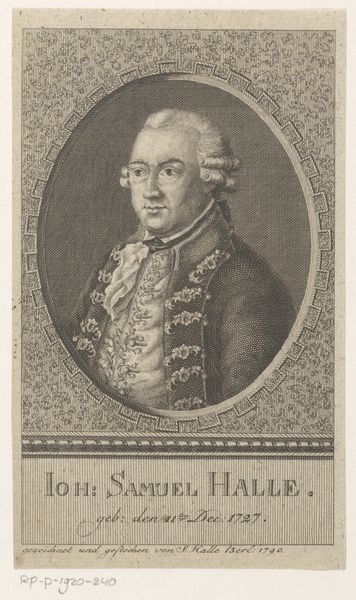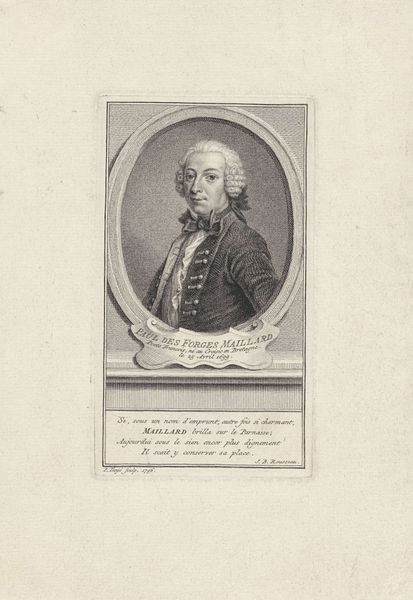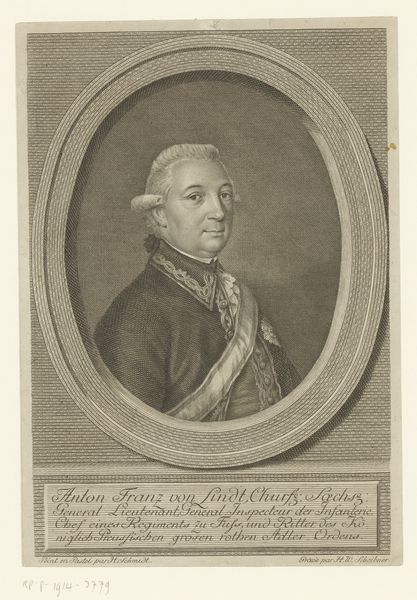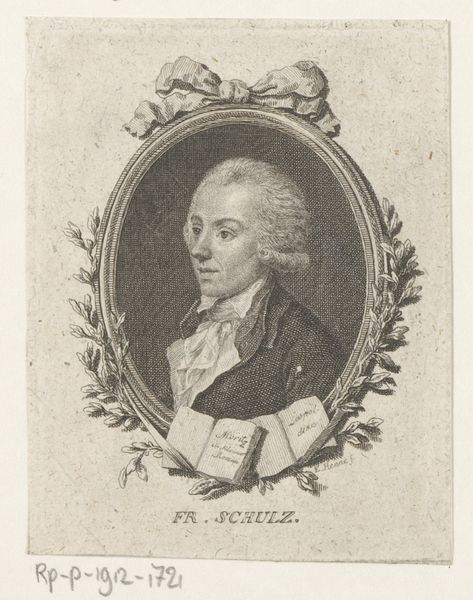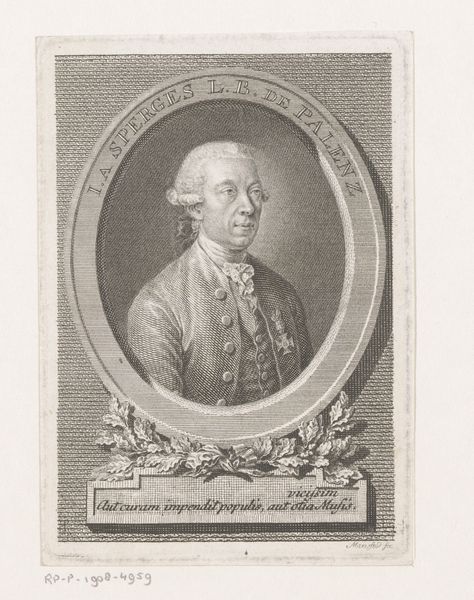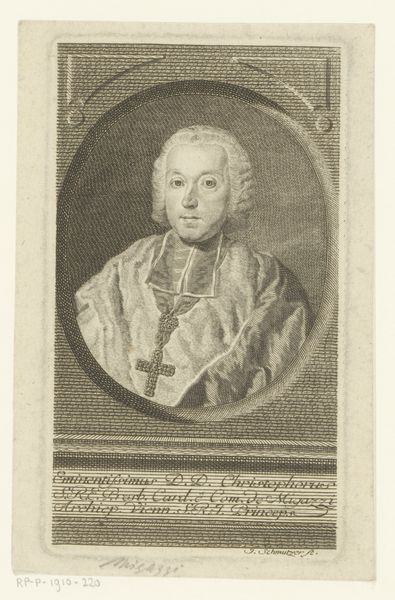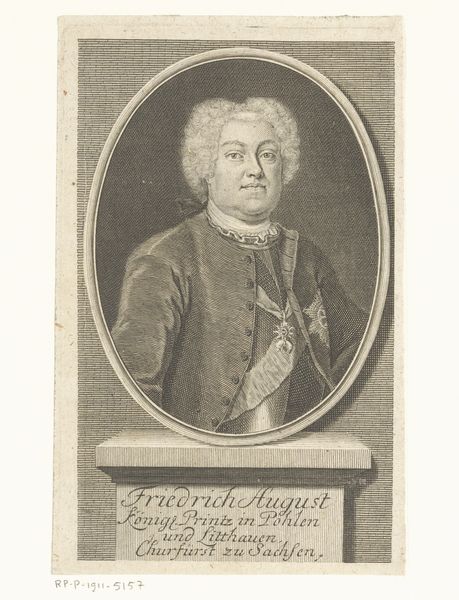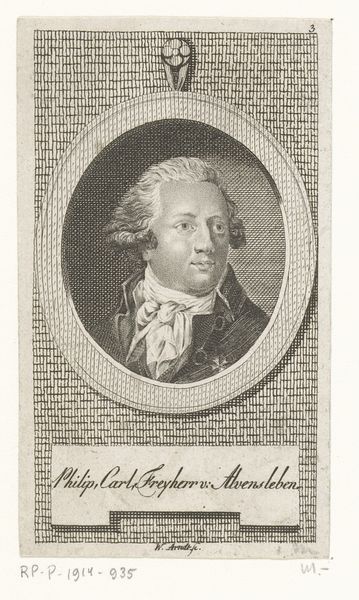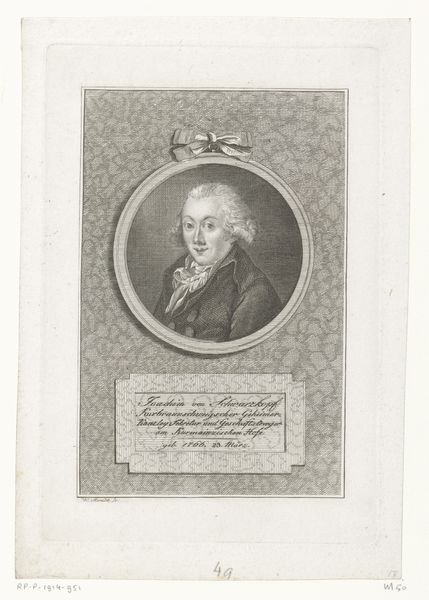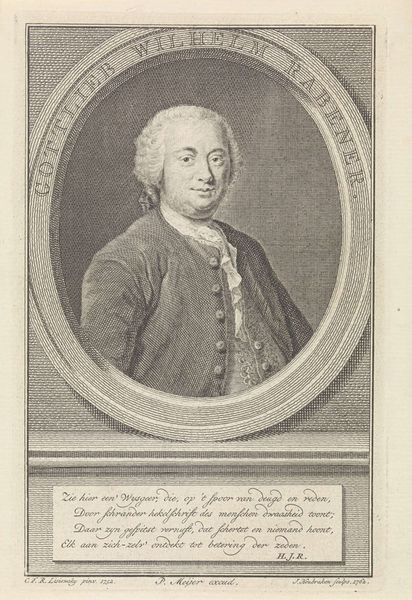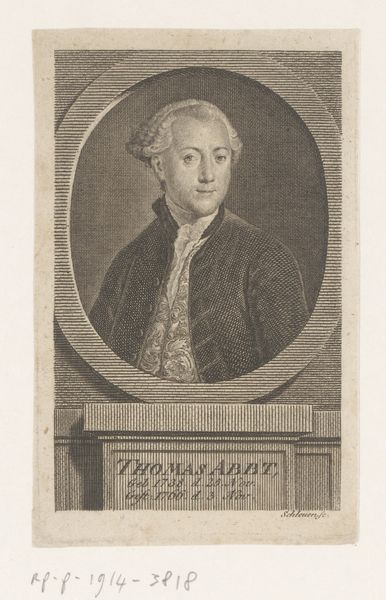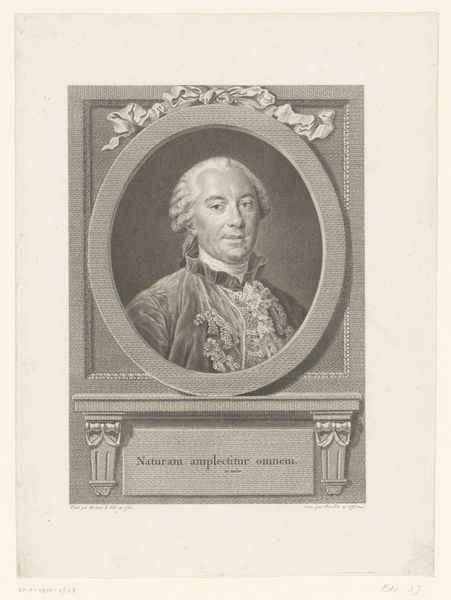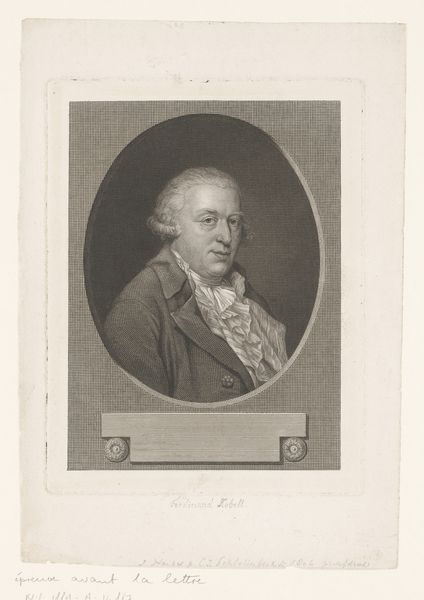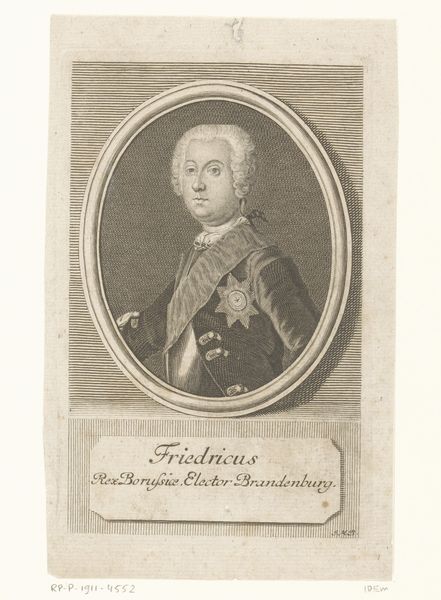
Dimensions: height 98 mm, width 57 mm
Copyright: Rijks Museum: Open Domain
Curator: I'm struck by the incredible detail achieved in this small engraving, a portrait of Carl Fürst von Kupferberg. Wilhelm Arndt created this work between 1799 and 1813. Editor: Yes, it’s delicate! It reminds me of a postage stamp, or maybe a bookplate. The cross-hatching behind the central oval feels almost textile-like. It suggests a handmade quality, doesn’t it? Curator: Absolutely. Looking at it from a production standpoint, engraving is such a labor-intensive process. The artist would have meticulously etched the lines into a metal plate, which were then inked and pressed onto paper. That repetitive motion speaks to a very particular type of craft. Editor: And the fact that this engraving would have been relatively easy to reproduce! This raises questions about how aristocratic portraits were circulated at the time. Was this designed as an intimate keepsake or a statement of power for public distribution? The museum as an institution certainly plays a part in conferring importance to an image like this. Curator: You're right to think about distribution. But consider the social context, too: the sitter, a German nobleman, is captured in a style referencing Baroque portraiture, but made via techniques aligned with contemporary printmaking practices. This reflects both older and newer forms of social prestige at the time. The quality of the paper stock itself also contributes to our reading of the work, speaking to particular markets and patterns of consumption. Editor: I can't help but wonder about his expression, that slight air of melancholy... Is that something inherent to Arndt's rendering, or is it a reflection of the social upheaval in Europe at the turn of the 19th century? Engravings such as these certainly served different purposes in different political contexts. Curator: Precisely. Understanding this work means appreciating that tension between artisanal production and societal factors. I am left wondering how Arndt reconciled them in the engraving process. Editor: And that tension between private image and public statement keeps me thinking about its cultural impact then and its ongoing legacy today, now that it resides in a place like the Rijksmuseum.
Comments
No comments
Be the first to comment and join the conversation on the ultimate creative platform.
